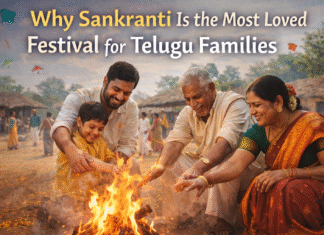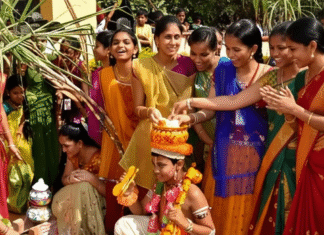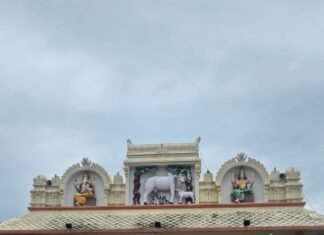The large tribal festival known as Medaram Jathara, or Sammakka Saralamma Jathara, is held in Telangana, India, and honors the goddess Sammakka and her daughter Saralamma. A four-day tribal festival is held at Medaram in Tadvai Mandal, Mulugu district. It is one of the largest tribal celebrations in the world, drawing millions of followers from numerous states.
Historical Background of Medaram Jathara
The history of Medaram Jathara is rooted in the folklore and traditions of the Koya tribe and other tribal communities in the region. According to legend, Sammakka was a tribal queen who lived in the 13th century. She is revered for her bravery and leadership in fighting against the Kakatiya rulers who imposed heavy taxes and injustices on the tribal people.
The Legend of Sammakka and Saralamma

The legend of Sammakka and Saralamma begins during a severe drought in the forest area of Medaram, causing immense suffering among the local tribes. A tribal chief from the Koya tribe discovered a miraculous girl glowing with a divine aura near a stream and named her Sammakka.
Adopted by the chief, Sammakka grew up to be known for her wisdom and bravery. She married Pagididda Raju, the tribal chief of a neighboring village, and had two sons, Jampanna and Nagulamma, and a daughter, Saralamma (Sarakka). When the oppressive Kakatiya rulers imposed heavy taxes, Sammakka led the tribes in resistance.
Despite fierce battles, the tribal forces were overpowered, her husband was killed, and her son Jampanna drowned himself in a stream, later named Jampanna Vagu. Sammakka continued to fight until she was captured but managed to escape into the forest and disappeared, believed to have transformed into a divine entity. Saralamma fought alongside her mother and met a similar fate. After their disappearance, the tribal people began worshipping Sammakka and Saralamma as goddesses, commemorating their sacrifice and valor.
Significance of Jampanna Vagu
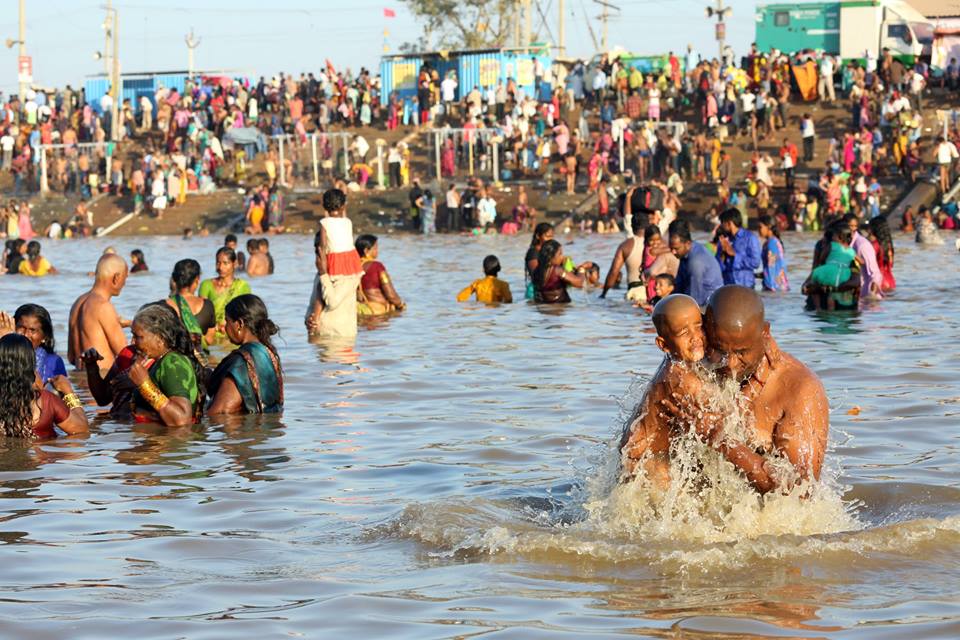
In the Medaram Jathara, Jampanna Vagu occupies a special place that represents the bravery and selflessness of Jampanna, the valiant son of Sammakka. The stream, named in his honor, is deeply revered by the local tribal communities. According to the legend, Jampanna fought valiantly alongside his mother Sammakka, and his aunt Saralamma against the Kakatiya rulers who oppressed the tribal people. Despite their efforts, the battle ended in tragedy. Overcome with grief, Jampanna leaped into the stream, where he is said to have drowned. The stream has since been a site of reverence, and during the festival, devotees believe that bathing in Jampanna Vagu cleanses them of their sins and brings them blessings. The act of dipping in the stream is seen as a way to connect with the spirit of Jampanna and honor his sacrifice.
Also Read: Experience the Spiritual Majesty of Bhadrakali Temple in Warangal
Celebration Traditions
Medaram Jathara is celebrated with great fervor and devotion. The festival spans four days and involves a series of rituals and traditions that reflect the rich cultural heritage of the tribal communities.
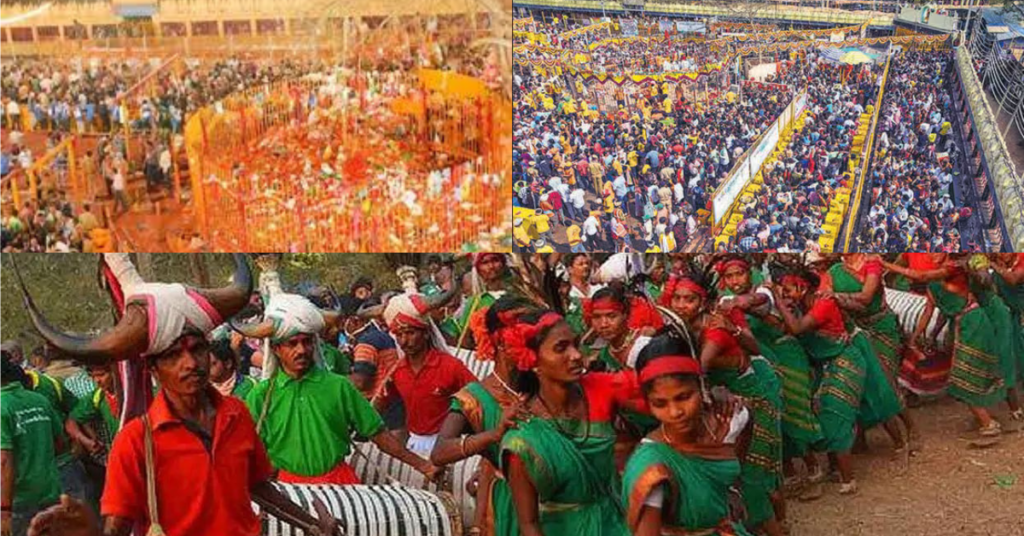
Day 1: Arrival of Saralamma
The first day marks the arrival of Saralamma’s idol from Kannepalli village. The idol is brought in a grand procession by tribal priests, accompanied by drum beats and traditional music. The arrival of Saralamma signifies the beginning of the festivities.
Day 2: Arrival of Sammakka
On the second day, the idol of Sammakka is brought from Chilukalagutta, a nearby hillock. The procession is a significant event, with thousands of devotees participating. The idols are placed on bamboo platforms under a tree, where devotees can offer their prayers and seek blessings.
Day 3: Main Festival Day
The festival’s major day is the third. Offerings to the gods include coconuts, jaggery (sometimes called “bangaram” or gold), and other commodities. Around the statues, there are mounds of jaggery, signifying the devotees’ devotion. The priests carry out a variety of ceremonies, and cultural events like music and tribal dances accentuate the joyous mood.
Day 4: Conclusion and Departure
On the final day, the deities are ceremonially taken back to their respective places in the forest. This marks the end of the festival, and devotees begin their journey back home, carrying the blessings of Sammakka and Saralamma.
How Medaram Jathara developed
The festival of Medaram Jathara has evolved over the centuries, growing in scale and significance. Initially, it was a local tribal gathering, but it has now become a major event attracting millions of devotees from various parts of India. The rituals and celebrations have remained largely unchanged, preserving the traditional customs and practices of the tribal communities.
The Role of the Koya Tribe
The Koya tribe, one of the largest tribal groups in the region, plays a central role in the festival. They are responsible for performing the rituals and maintaining the traditions associated with Medaram Jathara. The tribal priests, known as “koyas,” lead the processions and conduct the ceremonies, ensuring that the customs are upheld.

Government and Public Participation
Over the years, the Telangana state government and various organizations have recognized the cultural and historical importance of Medaram Jathara. They provide support and infrastructure to manage the large crowds and ensure the smooth conduct of the festival. This includes providing food and water, and arranging medical services, setting up temporary shelters.
Also Read: Ramappa Lake: Your Perfect Getaway in Warangal
Significance of Bangaram at Medaram Jathara
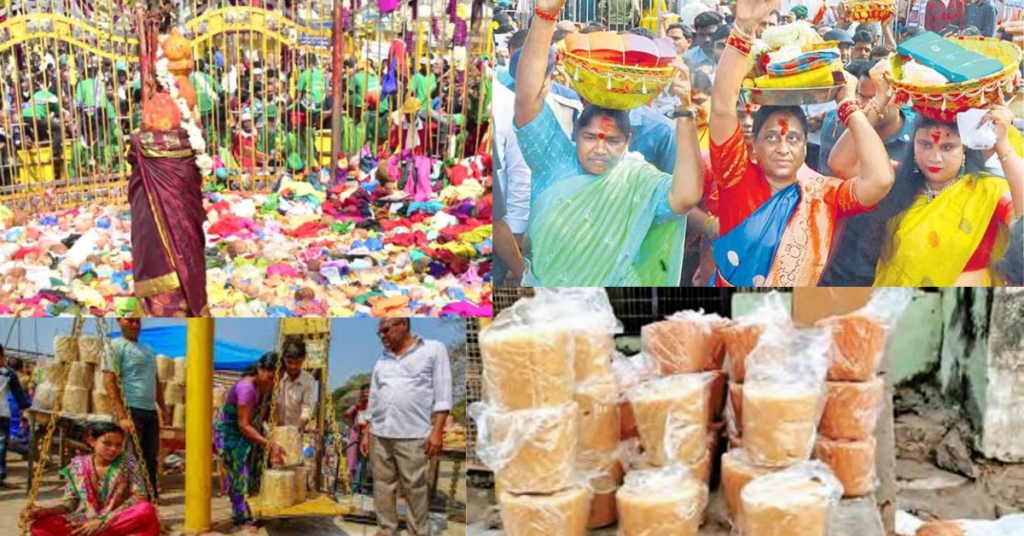
Bangaram, or jaggery, plays a crucial role in the Medaram Jathara, symbolizing devotion and purity. Devotees bring large quantities of jaggery as an offering to the deities Sammakka and Saralamma. Arranged around the statues, this sweet sacrifice is thought to appease the goddesses and bring favors and wealth. Offering jaggery is a custom that expresses thanks and respect and represents the festival’s profound cultural and spiritual significance.
Accommodation at Medaram Jathara

During the Medaram Jathara, temporary accommodations are set up to accommodate the large influx of devotees. These include tents and makeshift shelters provided by the local administration. For those seeking more structured lodging, Telangana Tourism has a Haritha guest house at Medaram. It offers basic amenities and It is typically first-come, first-served and provides modest amenities. Advanced booking is recommended due to the high demand during the festival.
Nearby Attractions
Eturnagaram Wildlife Sanctuary: About 90 km from Medaram, this sanctuary is home to diverse flora and fauna, offering opportunities for wildlife enthusiasts and nature lovers.
Laknavaram Lake: Approximately 35km from Medaram, Laknavaram Lake is known for its scenic beauty and the unique hanging bridges that connect the lake’s islands.
Ramappa Temple: Situated about 49 km from Medaram in Palampet, this 13th-century temple is renowned for its intricate sculptures and UNESCO World Heritage status.
Bogatha Waterfall: Approximately 50 km from Medaram, this scenic waterfall, also known as the “Niagara of Telangana,” is surrounded by lush greenery and is a popular spot for nature enthusiasts.
Medaram Location and Transport
Location: Medaram is a village in Mulugu district, Telangana, located in the Eturnagaram Wildlife Sanctuary. It is about:
- 110 km from Warangal
- 259 km from Hyderabad
- 155 km from Kaleshwaram
- 175 km from Sironcha, Maharashtra
Getting There:
- By Road: Accessible by car or bus. Buses are operated by TGSRTC from Hyderabad Warangal, and during the festival, there are numerous special buses.
- By Train: The nearest stations are in Warangal, Kazipet and Secunderabad. Special trains run to Warangal and Kazipet, from where you can take a bus or car to Medaram.
- By Air: Fly into Hyderabad airport, then drive or take a train to Warangal, and proceed to Medaram by road.
Conclusion
In South Asia, the great tribal celebration of Medaram Jathara attracts millions of people to pay homage to the deities Sammakka and Saralamma. Held every two years in the remote Medaram village of Telangana, it highlights the rich traditions and strong spirit of the Koya tribe. The festival features vibrant rituals, including offerings and traditional dances, and serves as a powerful celebration of tribal culture and unity. Despite its remote location, the festival’s significance and the devotion it inspires continue to attract visitors from across the country.
FAQs
A: Medaram Jathara is a major tribal festival in Telangana honoring the goddesses Sammakka and Saralamma.
A: The festival is held every two years, spanning four days
A: It takes place in Medaram village, Tadvai Mandal, Mulugu district, Telangana.
A: Medaram can be reached by road, train (Warangal or Secunderabad), or air (Hyderabad airport).
A: Bangaram (jaggery) is offered to the deities as a symbol of devotion and is believed to bring prosperity and blessings.
A: Nearby attractions include Eturnagaram Wildlife Sanctuary, Laknavaram Lake, Ramappa Temple, and Bogatha Waterfall.
A: The festival attracts millions of devotees from various states across India.






